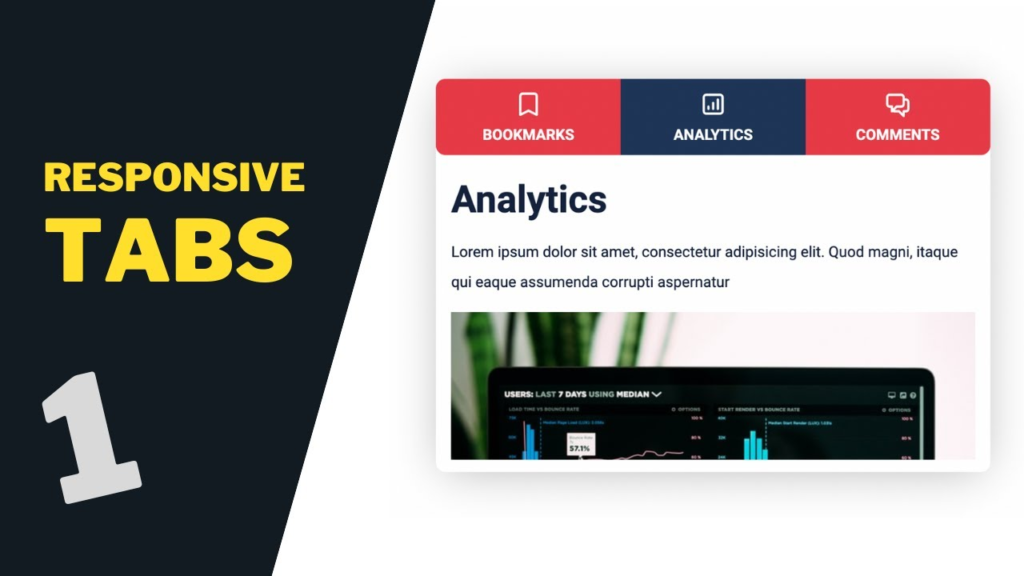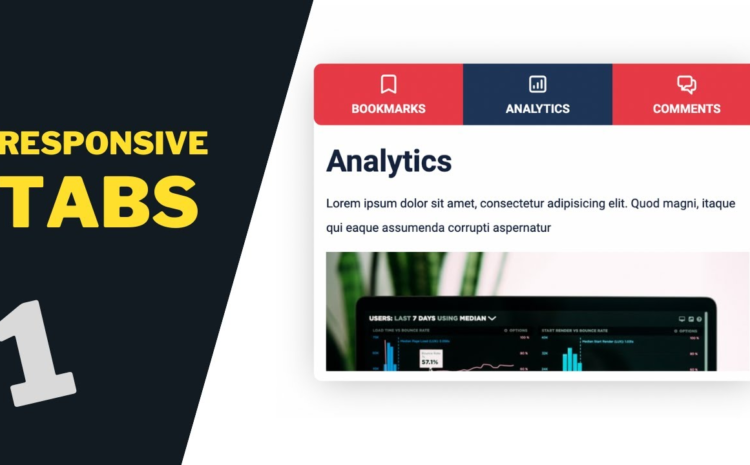Responsive Tab Design: Best Practices for Mobile-Friendly Websites 2024
Responsive Tab Design: Best Practices for Mobile-Friendly Websites
Table of Contents
Responsive Tab Design
In nowadays’ quick-paced virtual scene, guaranteeing that your web website is every buyer lovely and streamlined for all gadgets is crucial. tabs paginas web diseños, With versatile devices representing more noteworthy than 1/2 of the overall net traffic, planning a responsive site has ended up being a zenith need. tabbed content, One vital detail of this is responsive tab design, which now not only complements the usability of a website but also improves navigation and personal enjoyment across specific display screen sizes.
In this article, we will discover the pleasant practices for developing powerful and responsive tab designs in particular tailor-made for mobile-pleasant websites. tabbed table, We’ll dive into the importance of responsive design, key elements to take into account while designing tabbed interfaces, and the advantages of prioritizing cellular-friendly tabs in modern net layouts.

1. Introduction to Responsive Design
Responsive website architecture is the technique for creating sites that offer a most dependable survey revealed across assorted gadgets, from PC frameworks to cell phones. how to tab HTML, This practice involves using flexible layouts, photos, and CSS media queries that adapt to extraordinary screen sizes.
One key element of a responsive layout is the combination of tabbed navigation. how to put a tab in HTML, Tabs are commonly used to organize content material cleanly and straightforwardly, assisting customers to navigate quickly. page tabs, However, designing responsive tabs poses its own set of demanding situations, particularly for mobile devices with smaller displays and contact-based interactions.
2. Importance of Mobile-Friendly Tabs
Mobile-friendly tabs are a vital part of net layout due to the fact they help streamline content employer and enhance usability on cell devices. tab the button, Poorly designed tabs can cause frustration, bad navigation, and multiplied bounce rates, especially if they’re tough to get entry to or study on smaller displays.
Responsive tabs make sure that your content is effortlessly available, irrespective of the device used. menu tab, They help users seamlessly transition between content sections, making their surfing enjoy greater enjoyable. createtab, Additionally, cell-friendly tabs make contributions to a website’s search engine marketing, as search engines prioritize websites with optimal user experiences.

3. Key Elements of Responsive Tab Design
To create responsive tabs, there are several key design elements to recall:
Tab Labeling
Tab labels have to be concise and descriptive to make certain users understand what content material lies in the back of every tab. tabulator in HTML, Long tab names ought to be prevented, as they are able to break the format on smaller displays.
Tab Sizing and Spacing
Responsive tab sizing should be regulated to exceptional screen sizes. dividers with 5 tabs, Tabs that can be too small on cell displays are challenging to click on, even as tabs that are too large may additionally waste valuable screen area. next tabs, Consistent spacing among tabs facilitates clarity and stops litter.
Tab Layouts and Positioning
Positioning the tabs is another crucial consideration. On desktop monitors, horizontal tabs paint properly. tabs notepad, However, for cell monitors, a stacked vertical format is probably better ideal for showing content at the same time as ensuring smooth admission and readability.

4. Best Practices for Creating Responsive Tabs
Optimize for Touchscreens
Since cell customers engage with tabs through contact, tabs ought to be huge and sufficient for clean tapping. tabs in web design, The perfect length for contact goals (consisting of tabs) is as a minimum of 48×48 pixels, in keeping with Google’s Material Design pointers. tabs in web design, It’s additionally critical to make sure there is enough space among every tab to save you unintentional faucets.
Focus on Accessibility
Ensuring that your responsive tabs are available to all users, which includes those with disabilities, is crucial. make your own tablature, Add keyboard navigation, and ensure that tabs are displayed screen-reader friendly by means of using proper ARIA (Accessible Rich Internet Applications) labels.
Using Media Queries for Tab Adjustments
CSS media queries are effective gear that can help you adjust tab designs based totally on display screen length. For instance, horizontal tabs on larger monitors can be converted into vertical accordion-fashion tabs on mobile gadgets. around the fur tab, These media queries help preserve design consistency while optimizing the format for exclusive devices.

5. Enhancing User Experience with Mobile Tabs
Implementing Sliding and Swiping Features
To enhance the consumer’s enjoyment, recall enforcing swipeable tabs on cellular gadgets. python tablet, This gesture-primarily based navigation lets users swipe via tabbed content seamlessly. It’s an intuitive characteristic that aligns with the herbal mobile person experience.
Avoiding Information Overload
Tabs are intended to break down content material into attainable sections, but overloading tabs with an excessive amount of content can overwhelm customers. tablet divider, Stick to the precept of simplicity and make sure that each tab incorporates clean, relevant records.
Testing Across Multiple Devices
Since your target audience may get admission to your web page from numerous cellular gadgets, thorough testing is important. file with tabs, Use equipment like Google Chrome’s Developer Tools to simulate special display sizes and confirm that your tabs are functioning and searching as meant on all gadgets.

6. Tools and Frameworks for Designing Responsive Tabs
Several tools and frameworks can assist in designing responsive tabs, including:
Bootstrap
Bootstrap gives an integrated tab thing that’s smooth to customize and responsive through default. how to open a can with a tab, The framework’s grid device and CSS utility training make it easy to put in force responsive tabs on any website.
Material UI
Material UI is some other first-rate framework that gives pre-built tab additives designed for responsiveness. document tabs, These components observe Google’s Material Design concepts, making sure that they’re user-friendly and reachable.
Custom CSS Solutions
For designers looking to have more control over their tab designs, custom CSS solutions are an excellent option. By writing your CSS code, you can fine-tune every aspect of your tabs’ responsiveness, from sizing to positioning and interactions.

7. Conclusion
Responsive tab design is an essential component of creating mobile-friendly websites that provide users with seamless surfing enjoyment across all gadgets. By following high-quality practices along with optimizing for touch, focusing on accessibility, and the use of media queries to conform to one-of-a-kind display screen sizes, you may ensure that your tabs enhance navigation and improve personal pleasure.
With the proper layout techniques and tools, responsive tabs may be functional and aesthetically appealing, contributing to an internet site’s basic usability and achievement. As cell usage continues to grow, integrating cellular-pleasant tabs into your internet design becomes increasingly crucial for retaining an enticing and aggressive online presence.








2 Comments
"Becky Hutson: Redefining Web Design with Innovative Solutions"2024
October 15, 2024
[…] advancing, with new attributes and innovations arising every year. Becky Hutson is familiar with the importance of staying ahead of the curve and integrating those improvements into her paintings. Some of the modern web […]
Creating Serenity: Essential Elements of Effective Spa Web Design
October 15, 2024
[…] create an experience of serenity and rest that mirrors the enjoyment clients will have in the spa. This article explores the vital factors of powerful spa internet Web Design that may help create a chilled and […]